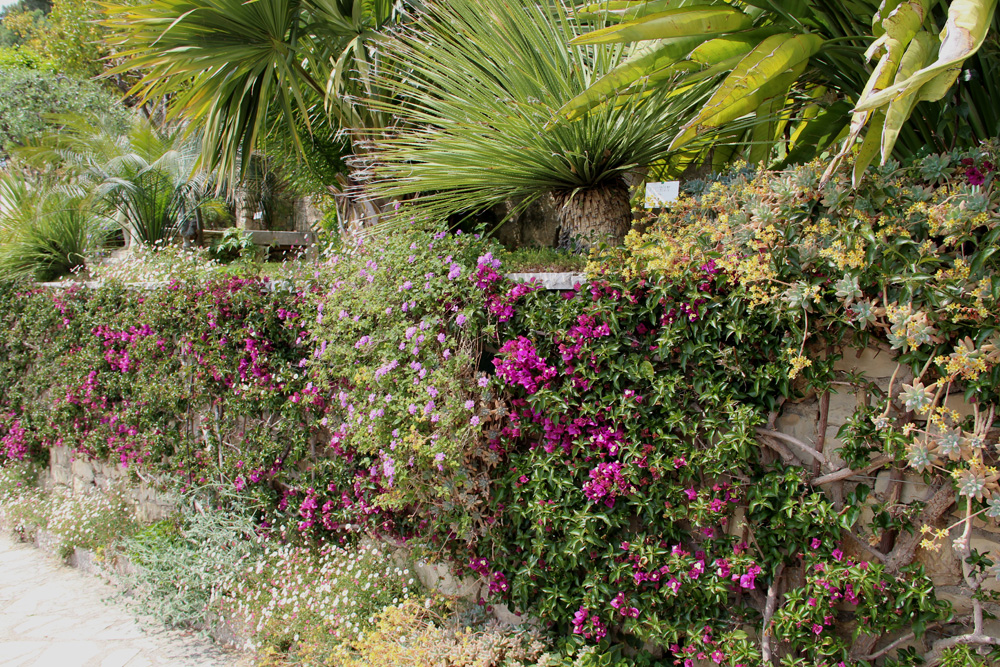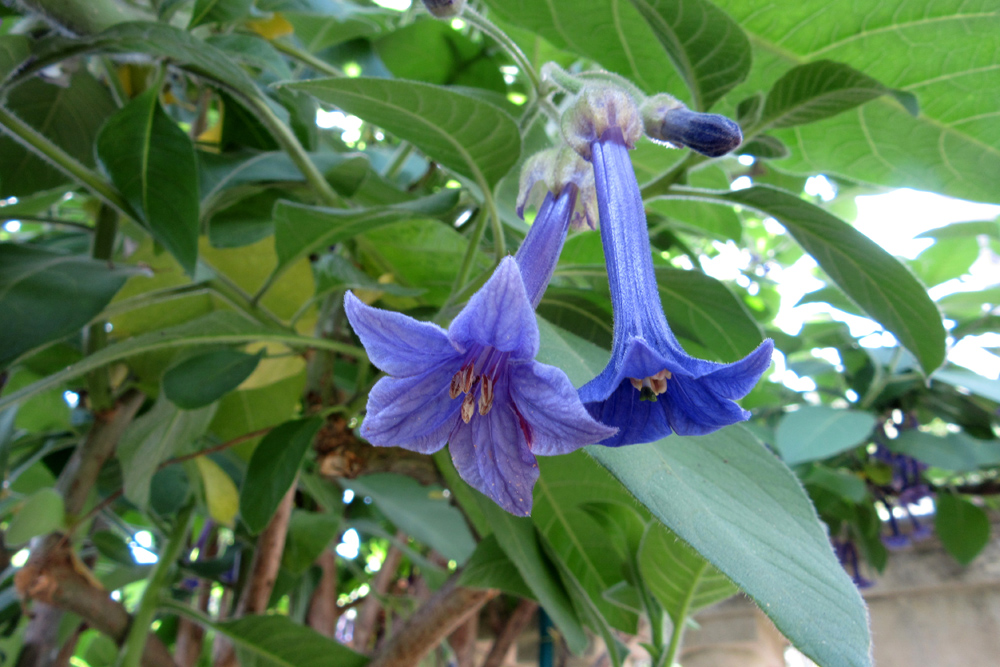May/ mai 2015
Visit to Cap Moderne and a private garden in Roquebrune-Cap-Martin, Alpes-Maritimes
Click on an image to enlarge it / Cliquez sur une image pour l’agrandir
The group of buildings comprising Eileen Gray’s villa, E-1027, Le Corbusier’s cabanon and holiday cottages and the Etoile de Mer bar-restaurant, all clinging to the rocks close the sea at Roquebrune-Cap Martin, are now collectively known as ‘Cap Moderne’.
The properties and gardens are undergoing major restoration works and, thanks to member Marin Smith, we were able to visit to see the first phase – the Eileen Gray house and garden.
Eileen Gray, decorator and furniture designer, was persuaded by her partner, the Romanian architect, Jean Badovici, to find a plot of land on the French coast where she could create a summer home, both a tranquil refuge and a place to entertain friends. The house, finished in 1929, incorporates all her ideas for modern living in a simple uncluttered style, with in-built functionality.
Eileen Gray, decorator and furniture designer, was persuaded by her partner, the Romanian architect, Jean Badovici, to find a plot of land on the French coast where she could create a summer home, both a tranquil refuge and a place to entertain friends.
The house, finished in 1929, incorporates all her ideas for modern living in a simple uncluttered style, with in-built functionality. The kitchen is outside to avoid cooking smells in the house, a room-divider contains cupboards for clothes, the table for afternoon tea incorporates a cake-stand, drawers rotate so that they can be accessed from either the bedroom or the bathroom area. In 1938 and 1939, Le Corbusier came to stay at the villa, and with Badovici’s encouragement, painted seven murals there. These were not to Eileen Gray’s taste (she was fond of plain walls) but five of them remain.

and, on the far wall, Le Corbusier’s mural.
Photograph: © Manuel Bougot – FLC/ADAGP, Paris
All the rooms have direct access to the exterior and the terraced garden, just above the rocks plunging down to the sea. The garden is being restored to Eileen Gray’s original design – a series of restanques, planted with rows of lemon trees and, when we were there, being seeded with grass to create lawns. We learned that the garden would be watered by hand,
as it was in the twenties and thirties, rather than installing a watering system.
An unusual feature was the solarium, an outdoor pit containing seats and slopes to lie on. This would have been part-filled with sand and was an area for sunbathing, equipped, of course, with a built-in table for cocktails.
Further work on the garden is planned for winter 2015/16 along with the restoration of the adjoining garden around Le Corbusier’s cabanon. This, we were told, will have a greater variety of Mediterranean plants, yuccas, agaves and aloes, along with the carob tree, Ceratonia siliqua, under which Le Corbusier liked to work. It will be interesting to visit again in a year’s time to see how the restoration work has progressed.
After a wonderful lunch in the old village of Roquebrune, we visited the charming garden of Pierre and Giancarla Venera.
They started the garden together in May 1968 and still lovingly tend it today with the help of their daughter who lives across the road. The garden is perched high up and planted on steep narrow terraces overlooking Roquebrune-Cap-Martin below. It has its own microclimate with some rainfall most nights and therefore requires very little supplementary watering. The garden is a plantsman’s delight, packed with unusual species collected from the couple’s worldwide travels and originally meticulously labelled, but a new puppy has wreaked havoc with all their hard work!
The garden is entered down a steep walled drive, planted densely on either side, using lots of pots for infilling colour.
As we descended to the second restanque everyone was particularly struck by the stunning Cedrus atlantica ‘Glauca Pendula’
which cascades over the path supported by a bright blue pergola.
Lower down is a lovely pool filled with Nymphaea and carp and crossed by a bright red bridge.
The garden is layer upon layer of trees, shrubs and plants packed together, pure delight. Here are some of our favourites:
Text and photos: Christine Daniels and Nicola D’Annunzio
![]()

















